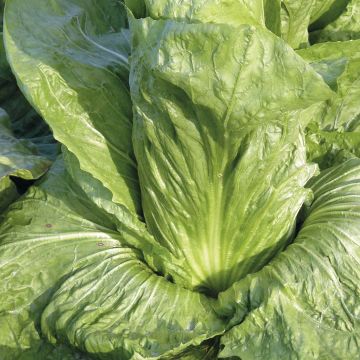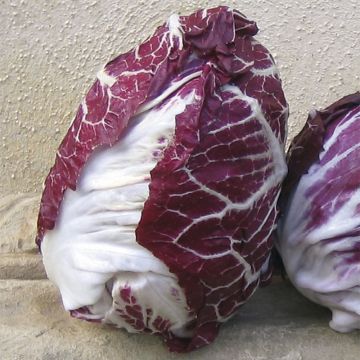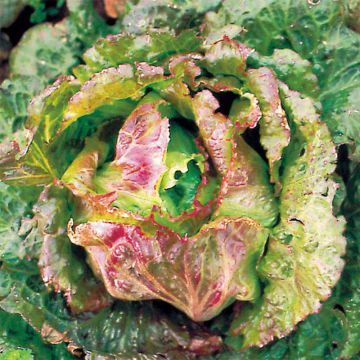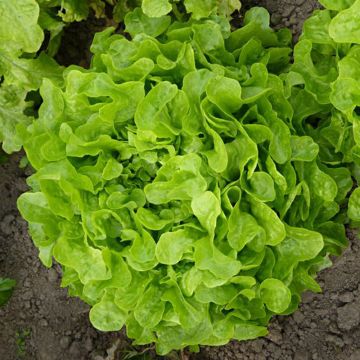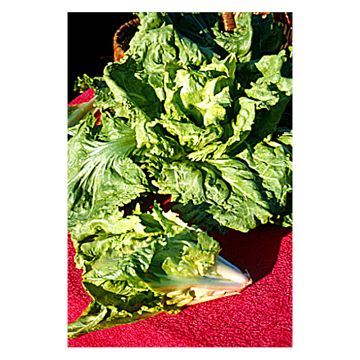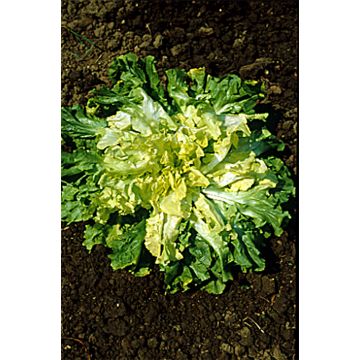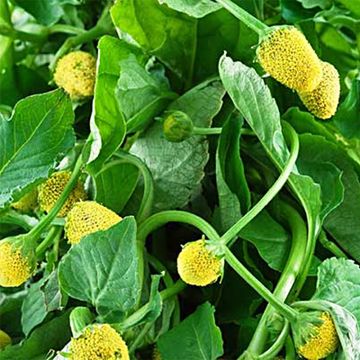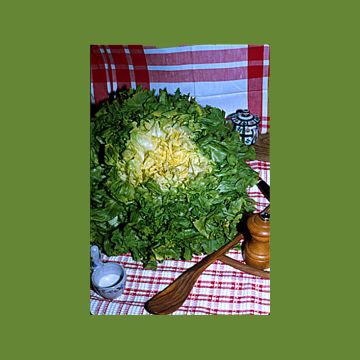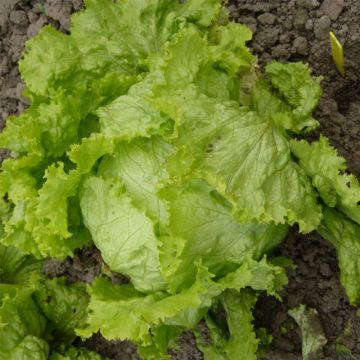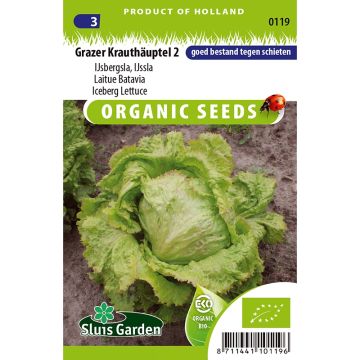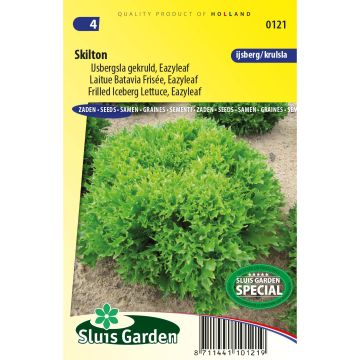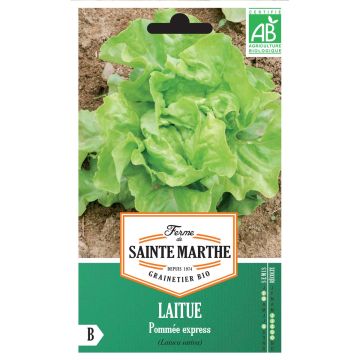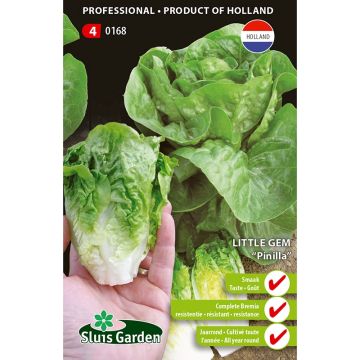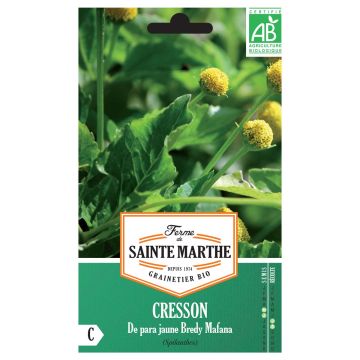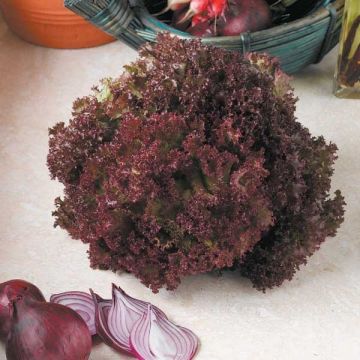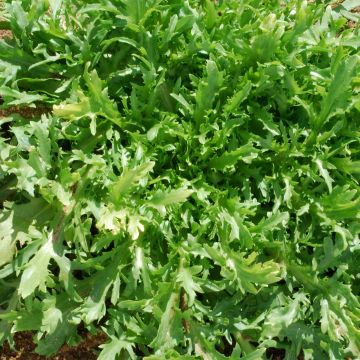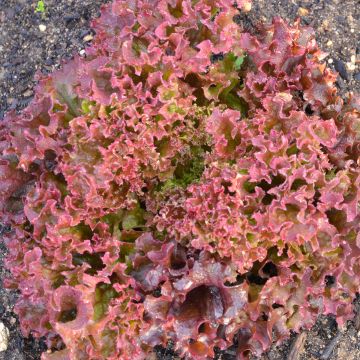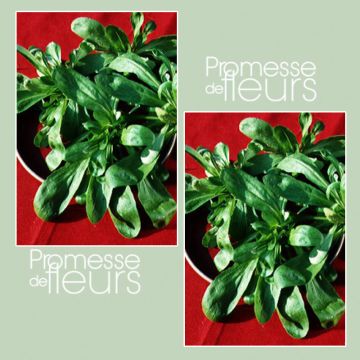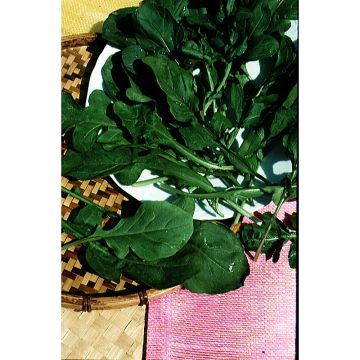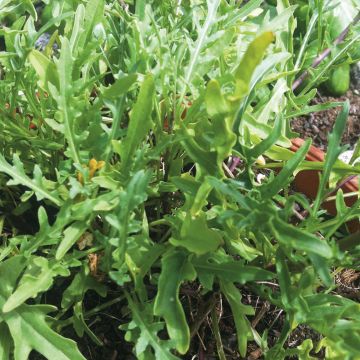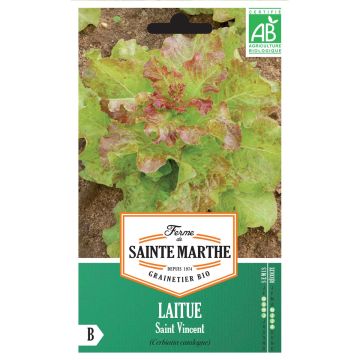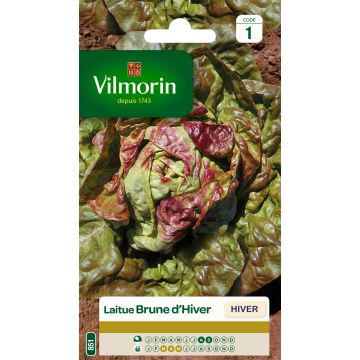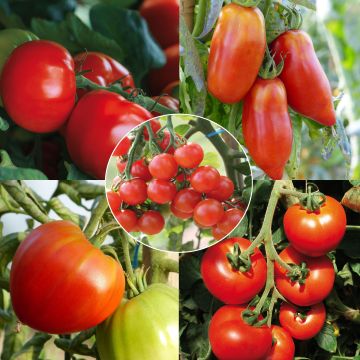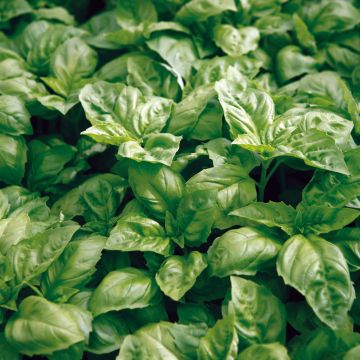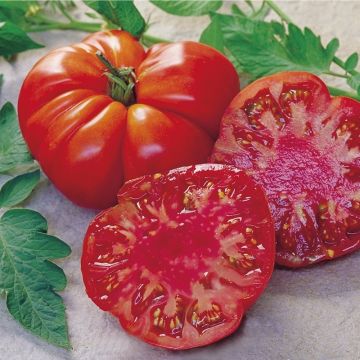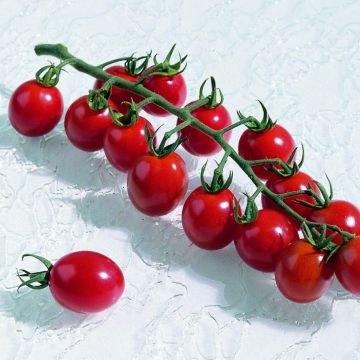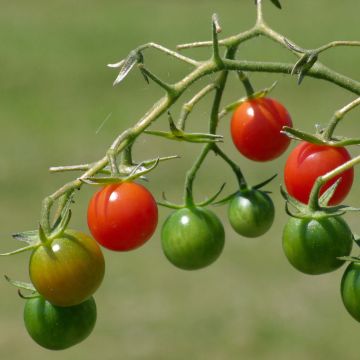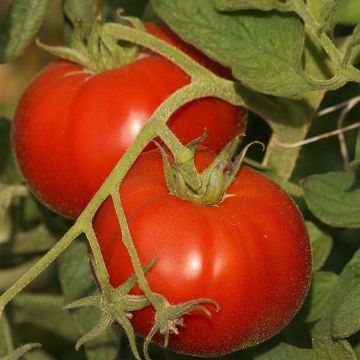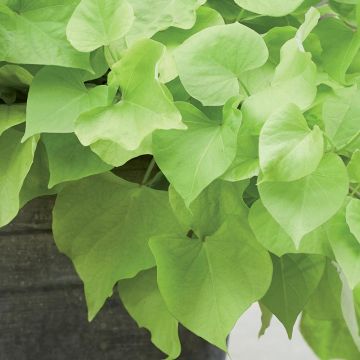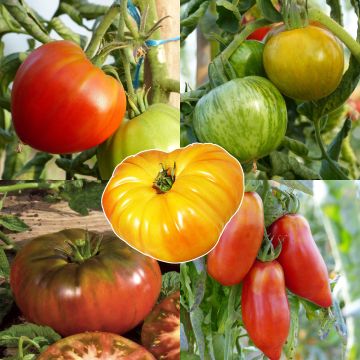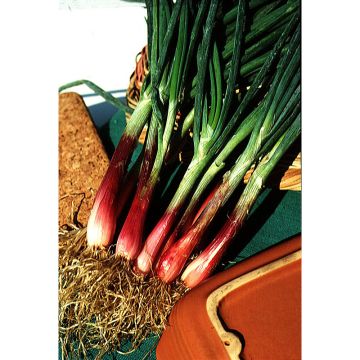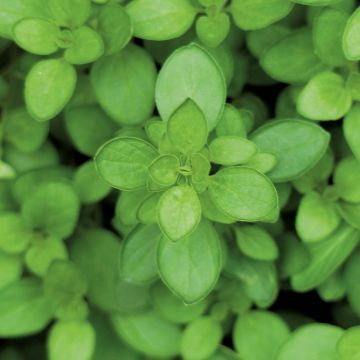Shipping country and language
Your country of residence may be:
Your country of residence is:
For a better user experience on our website, you can select:
Your shipping country:
-
Andorra
-
Austria
-
Belgium
-
Bulgaria
-
Canada
-
Chile
-
Croatia
-
Cyprus
-
Czechia
-
Denmark
-
Estonia
-
Finland
-
France
-
Germany
-
Greece
-
Hungary
-
Iceland
-
Ireland
-
Italy
-
Latvia
-
Lithuania
-
Luxembourg
-
Malta
-
Monaco
-
Netherlands
-
Poland
-
Portugal
-
Romania
-
Slovakia
-
Slovenia
-
Spain
-
Sweden
-
Switzerland
-
United Kingdom
We only deliver seed and bulb products to your country. If you add other products to your basket, they cannot be shipped.
Language:
-
French
-
German
-
Spanish
-
English
-
Italian
My Account
Hello
My wish lists
Log in / Register
Existing customer?
New customer?
Create an account to track your orders, access our customer service and, if you wish, make the most of our upcoming offers.
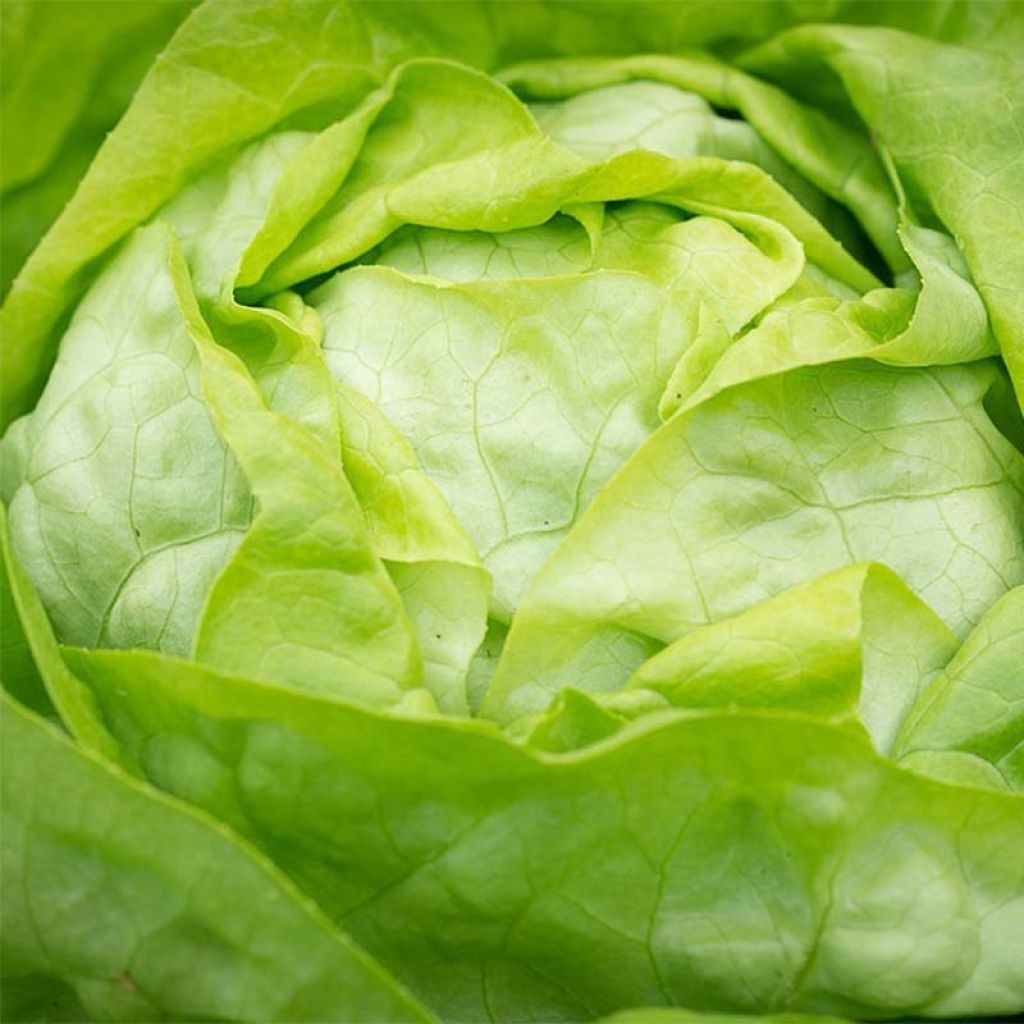

Laitue pommée Justine en plants
Lettuce Justine - Lactuca sativa
Lactuca sativa Justine
Lettuce
Plants are very advanced, I lost half of them, not cool.
Joel, 22/04/2020
Why not try an alternative variety in stock?
View all →Order in the next for dispatch today!
Dispatch by letter from €3.90.
Delivery charge from €5.90 Oversize package delivery charge from €6.90.
More information
This item is not available in your country.
Schedule delivery date,
and select date in basket
This plant carries a 6 months recovery warranty
More information
We guarantee the quality of our plants for a full growing cycle, and will replace at our expense any plant that fails to recover under normal climatic and planting conditions.
From €5.90 for pickup delivery and €6.90 for home delivery
Express home delivery from €8.90.
Description
The Justine Lettuce is a lettuce with a beautiful dense head and a nicely combed appearance, tolerant to heat, particularly suited for summer cultivation. Its beautiful tender leaves, slightly curled and of excellent taste quality, are perfect in salads, braised, as a garnish or steamed.
If lettuce is one of the most popular vegetables (4.2 kilograms per year per person), it is because of its freshness, crispness, and taste and nutritional qualities. It can be consumed raw in salads but also cooked, for example, to accompany peas.
The ultimate leaf vegetable, lettuce is an annual plant that belongs to the large Asteraceae family. Its Latin name, Lactuca sativa, refers both to the white sap (lactuca) that flows when it is cut and to the fact that it is cultivated (sativa).
It is an essential vegetable in any respectable vegetable garden, and there are so many varieties that it can be grown almost all year round.
Lettuce cultivation is easy as long as you respect the cultivation calendar for each variety. Its growth is rapid and it thrives in any soil, provided it is rich and remains moist.
Harvest: Simply use a knife to harvest lettuce when it is well developed.
Storage: Lettuce can be stored for a few days in the refrigerator, but to enjoy its freshness to the fullest, we recommend consuming it immediately after harvesting. Freezing cooked lettuce is also possible.
Gardener's tip: A real nightmare for gardeners, slugs and snails love lettuce leaves. When the hunt is on, we are ready to do anything to repel or eliminate them: ash cord (which will quickly be leached by the rains), homemade traps filled with beer (which intoxicate hedgehogs to the point of ethylic coma), copper strips that are supposed to electrocute them (which tickle them a bit)...
Instead of wasting your time and, incidentally, your salads, we recommend using an anti-slug product composed of ferric phosphate known as Ferramol. Unlike metaldehyde-based slug killers, which are dangerous for wildlife and polluting, Ferramol is natural, non-toxic, and very effective as long as you remember to "treat" your plot a few days before sowing.
Note: Attention, our young plug plants are professional products reserved for experienced gardeners: upon receipt, transplant and store them under cover (veranda, greenhouse, cold frame...) at a temperature above 14C° for a few weeks before being planted outdoors once the risk of frost is definitively avoided.
Report an error about the product description
Harvest
Plant habit
Foliage
Other Salad leaves
Planting and care
Lettuce is not a very demanding vegetable but it still requires a humus-rich soil, otherwise it tends to bolt prematurely. It is advisable to apply a moderate amount of well-rotted compost in the autumn, preferably, by digging it in to a depth of 5 cm (2in), after having properly loosened the soil as you would for any vegetable cultivation. It prefers slightly acid to neutral soils (pH between 5.5 and 7.5).
During cultivation, remember that lettuce prefers moist soils and make sure to water it regularly.
Lettuce is a good companion plant, it can easily be interplanted with slower-growing vegetables such as beans, tomatoes, cucumbers... Just avoid planting it near corn.
Cultivation
Care
Intended location
-
, onOrder confirmed
Reply from on Promesse de fleurs
Vegetable plants
Haven't found what you were looking for?
Hardiness is the lowest winter temperature a plant can endure without suffering serious damage or even dying. However, hardiness is affected by location (a sheltered area, such as a patio), protection (winter cover) and soil type (hardiness is improved by well-drained soil).

Photo Sharing Terms & Conditions
In order to encourage gardeners to interact and share their experiences, Promesse de fleurs offers various media enabling content to be uploaded onto its Site - in particular via the ‘Photo sharing’ module.
The User agrees to refrain from:
- Posting any content that is illegal, prejudicial, insulting, racist, inciteful to hatred, revisionist, contrary to public decency, that infringes on privacy or on the privacy rights of third parties, in particular the publicity rights of persons and goods, intellectual property rights, or the right to privacy.
- Submitting content on behalf of a third party;
- Impersonate the identity of a third party and/or publish any personal information about a third party;
In general, the User undertakes to refrain from any unethical behaviour.
All Content (in particular text, comments, files, images, photos, videos, creative works, etc.), which may be subject to property or intellectual property rights, image or other private rights, shall remain the property of the User, subject to the limited rights granted by the terms of the licence granted by Promesse de fleurs as stated below. Users are at liberty to publish or not to publish such Content on the Site, notably via the ‘Photo Sharing’ facility, and accept that this Content shall be made public and freely accessible, notably on the Internet.
Users further acknowledge, undertake to have ,and guarantee that they hold all necessary rights and permissions to publish such material on the Site, in particular with regard to the legislation in force pertaining to any privacy, property, intellectual property, image, or contractual rights, or rights of any other nature. By publishing such Content on the Site, Users acknowledge accepting full liability as publishers of the Content within the meaning of the law, and grant Promesse de fleurs, free of charge, an inclusive, worldwide licence for the said Content for the entire duration of its publication, including all reproduction, representation, up/downloading, displaying, performing, transmission, and storage rights.
Users also grant permission for their name to be linked to the Content and accept that this link may not always be made available.
By engaging in posting material, Users consent to their Content becoming automatically accessible on the Internet, in particular on other sites and/or blogs and/or web pages of the Promesse de fleurs site, including in particular social pages and the Promesse de fleurs catalogue.
Users may secure the removal of entrusted content free of charge by issuing a simple request via our contact form.
The flowering period indicated on our website applies to countries and regions located in USDA zone 8 (France, the United Kingdom, Ireland, the Netherlands, etc.)
It will vary according to where you live:
- In zones 9 to 10 (Italy, Spain, Greece, etc.), flowering will occur about 2 to 4 weeks earlier.
- In zones 6 to 7 (Germany, Poland, Slovenia, and lower mountainous regions), flowering will be delayed by 2 to 3 weeks.
- In zone 5 (Central Europe, Scandinavia), blooming will be delayed by 3 to 5 weeks.
In temperate climates, pruning of spring-flowering shrubs (forsythia, spireas, etc.) should be done just after flowering.
Pruning of summer-flowering shrubs (Indian Lilac, Perovskia, etc.) can be done in winter or spring.
In cold regions as well as with frost-sensitive plants, avoid pruning too early when severe frosts may still occur.
The planting period indicated on our website applies to countries and regions located in USDA zone 8 (France, United Kingdom, Ireland, Netherlands).
It will vary according to where you live:
- In Mediterranean zones (Marseille, Madrid, Milan, etc.), autumn and winter are the best planting periods.
- In continental zones (Strasbourg, Munich, Vienna, etc.), delay planting by 2 to 3 weeks in spring and bring it forward by 2 to 4 weeks in autumn.
- In mountainous regions (the Alps, Pyrenees, Carpathians, etc.), it is best to plant in late spring (May-June) or late summer (August-September).
The harvesting period indicated on our website applies to countries and regions in USDA zone 8 (France, England, Ireland, the Netherlands).
In colder areas (Scandinavia, Poland, Austria...) fruit and vegetable harvests are likely to be delayed by 3-4 weeks.
In warmer areas (Italy, Spain, Greece, etc.), harvesting will probably take place earlier, depending on weather conditions.
The sowing periods indicated on our website apply to countries and regions within USDA Zone 8 (France, UK, Ireland, Netherlands).
In colder areas (Scandinavia, Poland, Austria...), delay any outdoor sowing by 3-4 weeks, or sow under glass.
In warmer climes (Italy, Spain, Greece, etc.), bring outdoor sowing forward by a few weeks.

